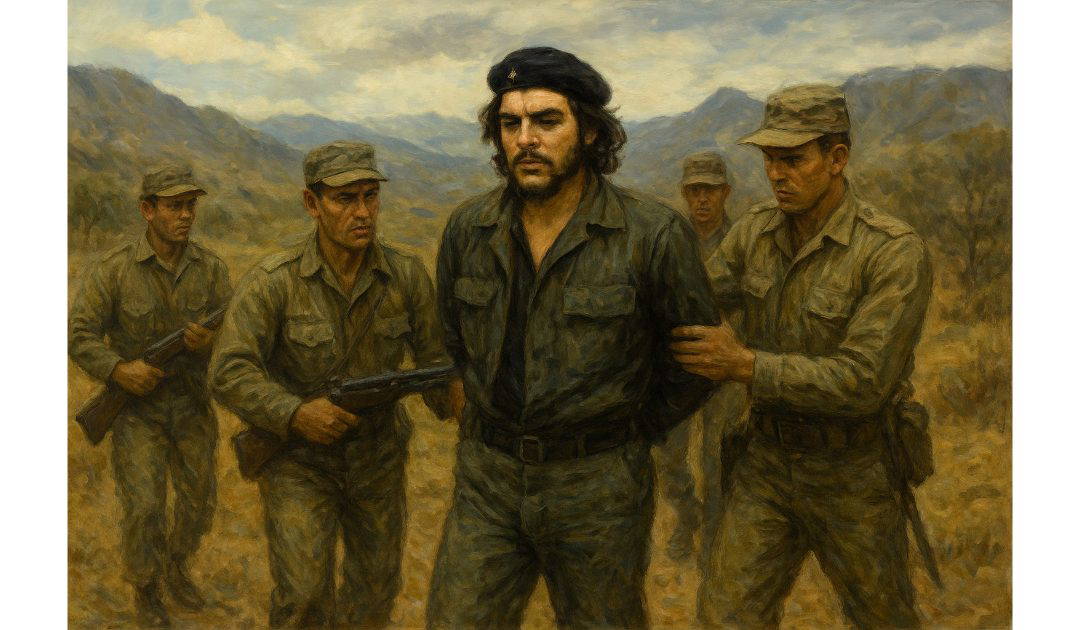On the 9th of October, 1967, Che Guevara was executed for attempting to incite revolution in Bolivia. It’s over forty years since I was a student at Oxford, but I remember that almost every student’s room had the iconic poster of Che Guevara on the wall, and the male students’ rooms also had the one of the female tennis player without underwear.
Ernesto “Che” Guevara, born on the 14th of June, 1928, in Rosario, Argentina, remains one of the most iconic revolutionary figures of the 20th century. His life was marked by a profound commitment to social justice, an unwavering belief in Marxist ideology, and his role in shaping the course of revolutionary movements across Latin America and beyond.
Guevara was the eldest of five children in a middle-class family of mixed Spanish, Irish, and Basque descent. His upbringing was intellectually stimulating, with his parents encouraging a love for literature, political debate, and critical thinking. Despite suffering from severe asthma, which plagued him throughout his life, young Ernesto was an avid athlete and displayed remarkable resilience.
His early education in Argentina fostered an interest in philosophy, politics, and literature. Enrolling at the University of Buenos Aires, he pursued a medical degree, where his exposure to the stark socio-economic disparities in Latin America deeply influenced his worldview. A pivotal moment came during his motorcycle journey across South America in 1951 with his friend Alberto Granado. Witnessing first-hand the widespread poverty, injustice, and exploitation, Guevara’s empathy for the oppressed and disdain for imperialism solidified.
After earning his medical degree in 1953, Guevara travelled through Central America, where he witnessed the effects of U.S. interventionism, particularly in Guatemala under the democratically elected President Jacobo Árbenz. Árbenz’s overthrow in a CIA-backed coup radicalised Guevara, reinforcing his belief that armed struggle was necessary to combat imperialism and capitalism.
In Mexico City in 1955, Guevara met Fidel Castro and his brother Raúl, exiled Cuban revolutionaries planning to overthrow the U.S.-backed Cuban dictator Fulgencio Batista. Guevara joined the 26th of July Movement as their chief medic but quickly earned a reputation for his leadership skills, strategic acumen, and fearless commitment.
Guevara was instrumental in the Cuban Revolution, participating in guerrilla warfare in the Sierra Maestra mountains and rising to the rank of comandante. His most notable military success was leading the decisive Battle of Santa Clara in December 1958, a victory that precipitated Batista’s fall. Guevara’s charisma, ideological fervour, and dedication made him a symbol of the revolution’s ethos.
Following the revolution’s triumph in 1959, Guevara held key governmental positions, including overseeing land reform and serving as President of the National Bank of Cuba, where he sought to reshape Cuba’s economy along socialist lines. His tenure was marked by efforts to diversify Cuba’s economy, reduce dependency on sugar, and foster international solidarity with other revolutionary movements.
Despite his prominent role in Cuba, Guevara grew restless with bureaucratic governance, yearning to ignite revolutionary fervour globally. In 1965, he left Cuba to support insurgencies abroad, beginning with the Congo, attempting to assist anti-colonial fighters. However, this campaign faltered due to logistical challenges, political disunity, and Guevara’s struggles to adapt to African revolutionary dynamics.
Undeterred, Guevara turned his attention to Bolivia, aiming to spark a continental revolution across South America. Establishing a guerrilla base in the remote Bolivian jungles, he faced immense difficulties: lack of local support, harsh terrain, and inadequate supplies. The Bolivian army, aided by the CIA, hunted his small band of fighters relentlessly.
On the 8th of October, 1967, Guevara was captured near La Higuera, Bolivia, after a fierce battle. The following day, under orders from the Bolivian government and with CIA involvement, he was executed. Guevara’s last words reportedly conveyed defiance and dignity, cementing his status as a martyr for revolutionary causes.
Che Guevara’s legacy is complex and polarising. To his admirers, he embodies the spirit of rebellion against oppression, a symbol of anti-imperialism and selfless dedication to the downtrodden. His image, immortalised in Alberto Korda’s iconic photograph, has become a universal emblem of resistance.
Critics, however, highlight his role in establishing repressive mechanisms in post-revolutionary Cuba, including overseeing executions of perceived enemies of the state. They argue that his revolutionary zeal often overshadowed pragmatic governance and respect for human rights.
Nonetheless, Guevara’s writings, particularly “The Motorcycle Diaries” and “Guerrilla Warfare,” continue to inspire activists, intellectuals, and revolutionaries worldwide. His life story transcends historical boundaries, embodying the enduring struggle for a more just and equitable world.

